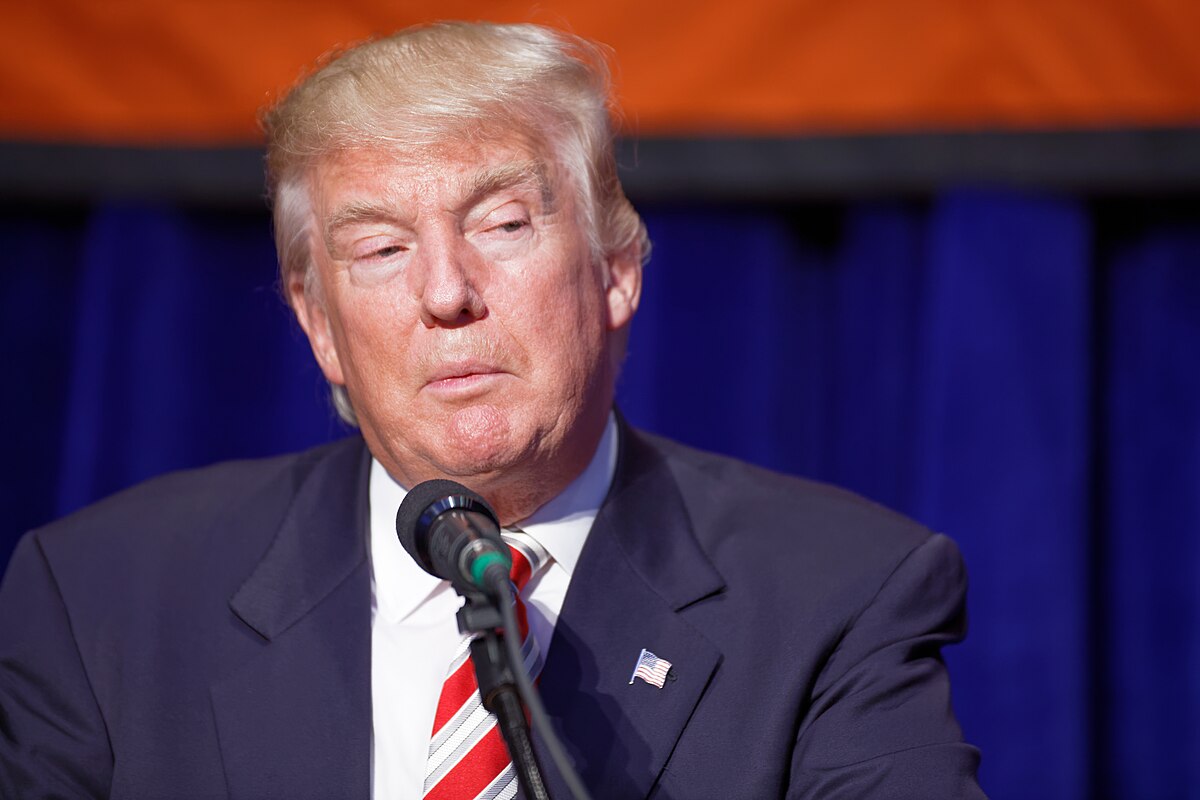- 14 3402-5578
- Rua Hygino Muzy Filho, 737, MARÍLIA - SP
- contato@latinoobservatory.org
According to the WorldEconomic Forum, the year 2024 will go down in history as the biggest election year: more than 2 billion voters in 50 countries will go to the polls. Of this number, in the United States, an estimated 36.2 million are eligible to vote this year compared to 32.3 million in 2020. This represents 50% of the total growth in eligible voters during the period, meaning every year, about 1.4 million Hispanics in the US became eligible to vote. If predictions come true, this will be the largest minority group in the history of US presidential elections.
Certain US states account for a larger share of Latino residents, including: 16 million in California, 12 million in Texas, 5 million in Florida, 4 million in New York and 2 million in Illinois in addition to, in percentage terms, New Mexico (48%), California (39%), Texas (39%), Arizona (31% ) and Nevada (29%).
New Mexico, a state where Latinos represent the largest portion of eligible voters (almost 43%), does not vote until June in the electoral primaries. However, all states that are next on the Latino presence list are already voting in the upcoming election cycle. In the case of eligible voters, the proportion is 30.5% in California, 30.4% in Texas, 23.6% in Arizona, 20.5% in Florida, 19.7% in Nevada and 15.9% in Colorado. Furthermore, it is worth mentioning that Latinos represent almost 12% of eligible voters in Illinois, another state that will vote soon. In a Democratic primary, Latinos' percentage of votes in most of these states will likely be higher than their percentage of the overall eligible population. Matt Barreto, managing partner and co-founder of Latino Decisions, a Democratic polling firm that focuses on Latino voters, said all indications in polls point to high Latino turnout in the upcoming primaries.
After voting in this group of states, Latinos will not have significant weight again until the April 24 primaries, when Rhode Island, Connecticut and New York, with eligible voting populations ranging between 11 and 15%, will hold their elections.
In most states, delegates are allocated based on the results of each congressional district. Although many may argue that Latinos are concentrated in a few large cities, in the three aforementioned states, at least, they are geographically dispersed in a way that will expand their influence. In total, according to Pew Research Center figures, Latinos make up at least 15% of the eligible population in 110 of the 154 congressional districts in those seven states, including 31 of the 36 in Texas.
Based on these data, the objective of this text is to analyze the electoral overview in the United States in 2024, highlighting especially the importance of the Latino vote.
The US elections: The rematch between Biden and Trump
In November 2020, the United States witnessed a historic duel between two political figures: the controversial President Donald Trump and the former Vice President, Joe Biden. That year, due to a large mobilization of the electorate, 66% of the population eligible to vote went to the polls, the highestnumber since 1900, consecrating Biden as the 46th president of the United States. However, initially, no one expected that this encounter would be repeated in the 2024 elections and that there would be no other candidate with the strength to defeat them.
On March 6, Nikki Haley, the first Republican candidate to launch her candidacy in 2023, announced the suspension of her campaign after a negative performance in her party's primaries against Donald Trump. On the Democratic side, without many opponents against Biden, Dean Phillips, congressman from the state of Minnesota, also withdrew from the race, supporting the president for the nomination. In this way, both Trump and Biden are now their parties' likely nominees to compete for the White House, generating a rare and unpopular “rematch” in American politics, with 67% of voters saying they are “tired” of seeing only these two names on the national political scene, according to a Reuterspoll.
Former President Trump is facing several legal accusations, ranging from his alleged interference in the American elections during the period he and his team of lawyers tried to reverse several electoral results in 2020, to the case of the retention of confidential documents in his home in Florida, those that should have been returned to the appropriate government authorities. Furthermore, as seen in the primaries, Nikki Haley polled above 20% in the majority of states that participated in the Republican primaries, something that threatens Trump's rhetoric of exclusive dominance over the party, but still guarantees a huge influence. The former president's campaign is reaching high levels of popular support with extremist rhetoric, citing as an example his statement made in December last year, in which he said that “immigrants are poisoning the blood of our country”. In fact, even leading the polls and having won a recent victory in the supreme court, in which it was decided that the former president can run in the elections and frustrating the state of Colorado, Trump may witness a similar level of rejection to what happened in 2020, as many other lawsuits he is involved in have not yet been to trial, which could make his return to the White House difficult. However, the path for Biden is no smoother than that of his future opponent.
At 81 years old, Biden is the oldest person to occupy the White House, a factor that worries voters about his ability to continue at the helm of American leadership, despite his opponent, Donald Trump, being just four years younger. Throughout his term, internal and external crises marked his administration, such as the withdrawal from Afghanistan in 2021, the profound changes in his economic recovery packages and, the one that generates the most fervor among his Republican opponents, the crisis on the border with Mexico . This issue has been arousing criticism for some time among Republicans, who accuse the president of not knowing how to deal with the supposed chaos occurring at the border. In 2023 alone, around 472,000 people were captured by US Border Protection, a record number. Furthermore, Republicans have a strategy that is based on expanding the rhetoric about possible chaos and violence that would have occurred at the borders to other parts of the country, such as large cities, most of which are governed by Democrats. New York, for example, is going through a historic moment, in which the city is no longer able to accommodate the excessive number of immigrants arriving, overloading public services. As a result, even Democrats criticize Biden, making him take actions considered controversial within his base, such as maintaining the construction of Trump's wall.
In other words, even though he is the likely nomination of his party, the current president will have some difficulty in the race compared to 2020, when Trump was mired in internal problems. However, the billionaire will not have a very smooth path in the dispute either, a situation that could create an unpredictable scenario for November.
The “Latino” category in the analysis of American electoral races
How is the Latino political heart after Trump and his anti-immigration measures? Furthermore, what is the current response to the actions of President Biden, who, in his campaigns, built the image of a champion character who would change the scenario? What is the opinion of the Latino population and what are their expectations for this election year? These are some of the questions that come into focus when thinking about the electoral challenges facing the United States in 2024.
It is necessary, first of all, to understand what this group consists of and its diversity, since there are 32 million Latinos with the right to vote; for every five Native Americans eligible to vote, one is Latino, says the director of race and ethnicity research at the Pew Research Center. Hispanic communities are, for the most part, components of the working class, which means that their main concerns are the economy, education and health, and, therefore, the search is for discourse that brings confidence and security in these areas.
Historically, the Latino electorate has adhered to the democratic aspect since the 1930s, when the Great Depression devastated the North American territory; This was mainly a consequence of the measures taken by Roosevelt with the New Deal, aimed at combating unemployment and poverty in that period, benefiting the Hispanic working community. Furthermore, it is interesting to mention that the Republican Party was supported by large businesspeople, distinguishing itself from the reality of a large part of Latin immigrants in the United States.
The category “Latino” is an uncomfortable, complex category, as it is diverse in many aspects. It was born in the 1960s, for analytical purposes, when Hispanics demanded belonging to the censuses in search of comprehensive access to basic public assistance. “Demographers knew they needed a category broad enough to have statistical power. [...] Some people proposed being classified as brown, but that was complicated because they could also include Filipinos or people from Southeast Asia”, observed Cristina Mora, a sociologist at the University of California at Berkeley. It is necessary to highlight, therefore, how the existing political commitment to categorizing different communities as “Hispanic” or “Latino” was not sufficient to enable the identification and regular representation of such heterogeneous groups.
Using the term “Latin electorate” as the main instrument for a written approach to the Latin American immigrant community and its manifestations, it is possible to talk about a scenario that draws attention: the gradual transition of the Hispanic electorate to the Republican vote. The electoral contribution of Latino communities is decisive for the future of the United States and, with such movement observed, this future may be written differently than expected. In order to understand the growing trend in the number of immigrants supporting former President Donald Trump, the broadcaster Deutsche Welle (DW) conducted interviews with three United States citizens who will follow the Republican side in these elections, one of them being of Hispanic origin. Jesus Marquez, son of immigrants, was one of the appointed members of the Trump campaign's Latino Advisory Council and spoke about his motivations for adopting the Republican side in 2024 – motivations that are common among many other Latinos in the United States: beyond from his primary concerns regarding the economy, education and health, Marquez talks about the situation at the border, with different arguments than expected, as they are against the entry of immigrants. In fact, many Latinos who are now citizens are dissatisfied with the current public policies at the border, in terms of allowing new immigrants to enter - this is because the current measures would be enabling these new immigrants to have access to social services that other Hispanics, already inhabitants of the territory and which are not in a similar emergency, do not have.
Furthermore, a recurring argument for justifying voting for President Donald Trump in the next elections is the defense of his relentless character as a synonym for “necessity”, so that “he can take back the reins of the country”. While the Democratic side acts in an inclusive and careful manner, aiming for “political correctness”, the direct essence of “making it happen” that has been propagated by Republicans has stood out, mainly, among minority and/or fragile communities – such as many immigrants – whose concern is to have bread on the table at the end of the day. In other words, it is possible to take into account that the Republican advance is a reality as a result of the way the Democratic Party dealt with the Hispanic electorate, as if racial identity were the only thing that led a voter to vote, thus disregarding the urgency of the Latino working class for the reopening of the economy – while, on the other side, Trump used direct contact with Latinos and their expectations to understand how he could align his intentions1.
Another, no less important, factor that adds to the growth of immigrants who adhere to republican discourse is the cultivation of the “communist threat”. In an interview with the WashingtonPost, Debbie Mucarsel-Powell, immigrant Democrat and first active South American in the US Congress, mentioned: “Some members of my party have begun to blame Latinos' fear of socialism as the cause of the Democratic losses. Yes, the fear of socialism is real and deep-rooted for those of us who have fled violence and persecution. I know firsthand the terrible impact such memories can have on immigrants like me; my own father was murdered by an armed criminal in Ecuador.”
The rhetoric, however, about the dangers of socialism, while forged in contexts in which the use of the term becomes advantageous in the sense of electoral disputes, is not new, and caution is needed in identifying the main reasons that correspond to the migration of Latin American populations to the country – in addition to what extent, the United States and global elites have reflected on these cases.
According to an analysis table drawn up based on observation of voting possibilities in the upcoming United States elections by The New York Times in conjunction with SiennaCollege, a statistic was observed that would seem to contradict the claims if we went back to the scenario of the last elections that elected the current president: it was found that the number of Hispanics who showed support for former President Donald Trump is 46%, while support for Joe Biden's re-election was just 40% among Latinos – which indicates that Trump has made notable advances in reaching out to voters of Latino descent. These numbers do not reflect, however, the change in ideological approaches within the Republican Party; in fact, it is precisely Trump's “steady hand” justification that appears as the motivation behind the change in scenario over the last 4 years. According to The New York Times, “Polls have repeatedly shown that these voters say they are attracted to Trump's positions on the economy and the border. Many Latino voters also point to Trump’s personality as a key part of his appeal.” (free translation).
In order to understand how this happened, it is necessary to analyze, among other factors, what have been the mechanisms used, in particular, by the Republican Party, to capture voters, focusing mainly on what is behind the change in the political scenario observed. In the sense of the appeal made by the Republicans, the action of the “Libre Initiative”: a non-profit organization that, financed by the Koch Brothers, dedicated to expanding the reach of the voice of the Hispanic community in the United States, through the sense of creation and development of opportunities. It is also possible to observe a similarity in Donald Trump's speech to approach the Latino electorate, when comparing the arguments used in the 2016 and 2020 elections, as well as those approaching this year. In 2016, support from Latin Americans for the former president was less than 30%, while in 2020, this number increased to a third. In May 2023, the division of voting intentions was almost equally divided between Trump and Biden regarding the 2024 elections, according to a study by Quinnipiac University. Thus, the growth in support of individuals from the Hispanic community for the ideals propagated by the Republican Party was visible. Something recurring in the speeches of the former president in question is the use of religious and cultural factors based on geographic and demographic differences within the United States, using messages aimed at citizens with Cuban, Venezuelan and Central American ties. As an example, Donald Trump has repeatedly classified the current president and his party measures as “communist”, provoking negative associations among voters with the governments they fled. According to Eduardo A. Gamarra (born in Bolivia, professor of politics and international relations at Florida International University), despite being distorted, Trump's speech is perfectly strategic: “This is reinforced by the local media, much more than the Trump campaign. Trump and other Republicans are saying: that this administration, the Biden administration, is behaving like banana republics behave, so that resonates very strongly here. [...] It’s a great policy, but it’s not true.” (free translation).
On one side, Donald Trump, and on the other, Joe Biden. For the first time in a long time, expectations have been misaligned and it is difficult to predict what the future holds for the United States of America. This time, we will have to wait and see.
1We recommend the article from the newspaper El País, which identifies, through conceptual and graphic means, the root of the social, identity and political complexity of Latino communities in the United States, in terms of the way they manifest themselves in the political and electoral spheres: <https://brasil.elpais.com/internacional/2021-01-04/identidade-voto-e-futuro-o-coracao-politico-latino-depois-de-trump.html>.











